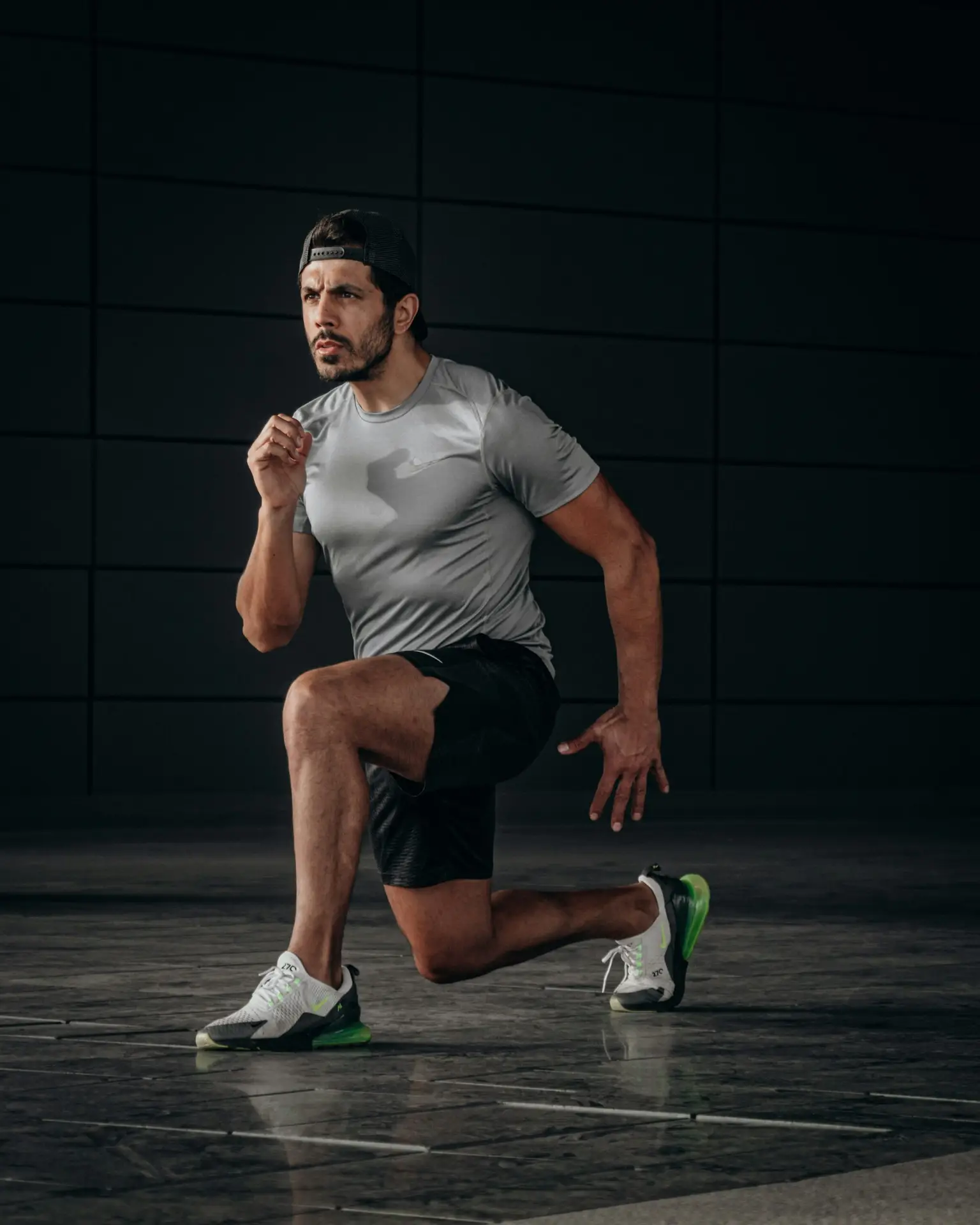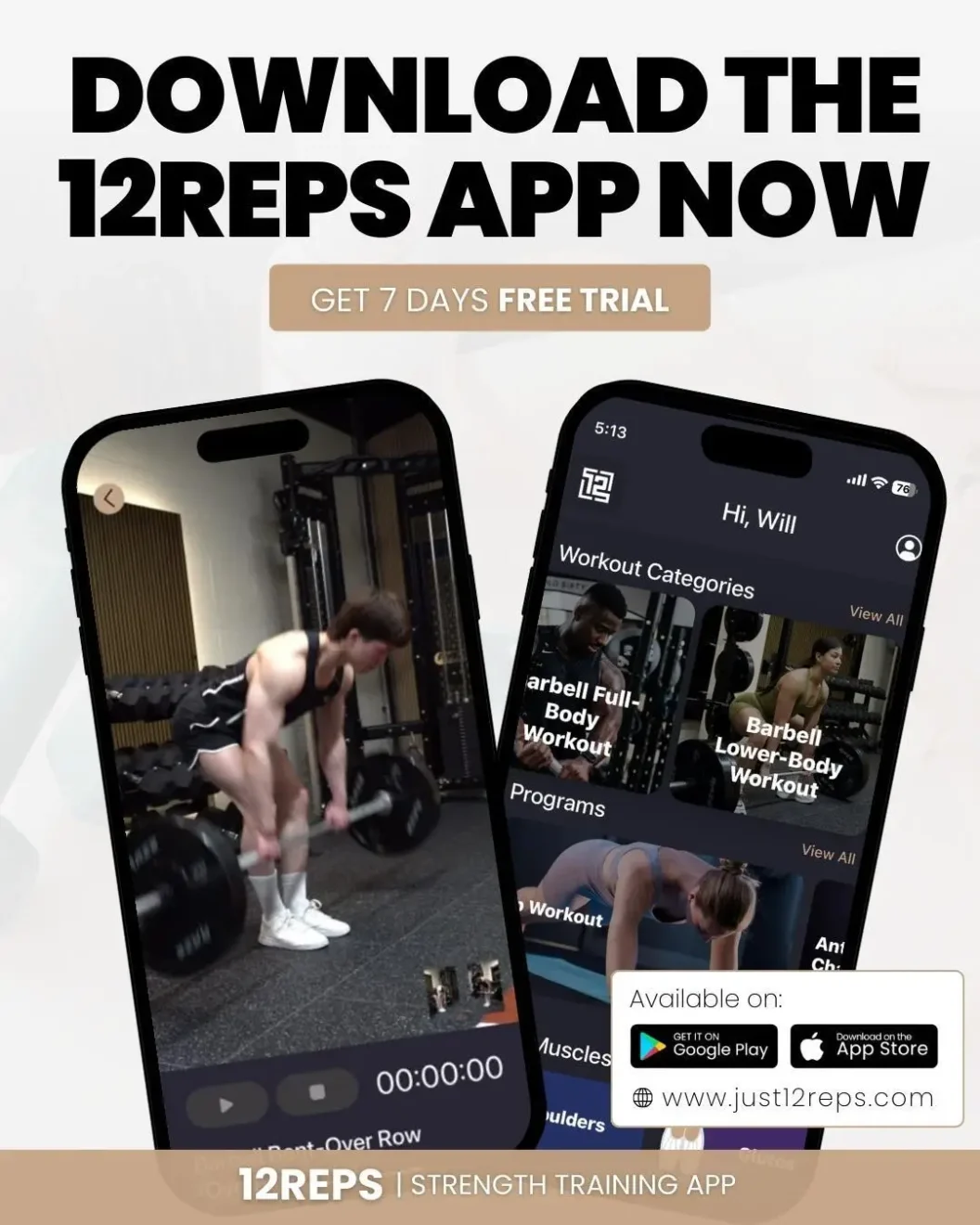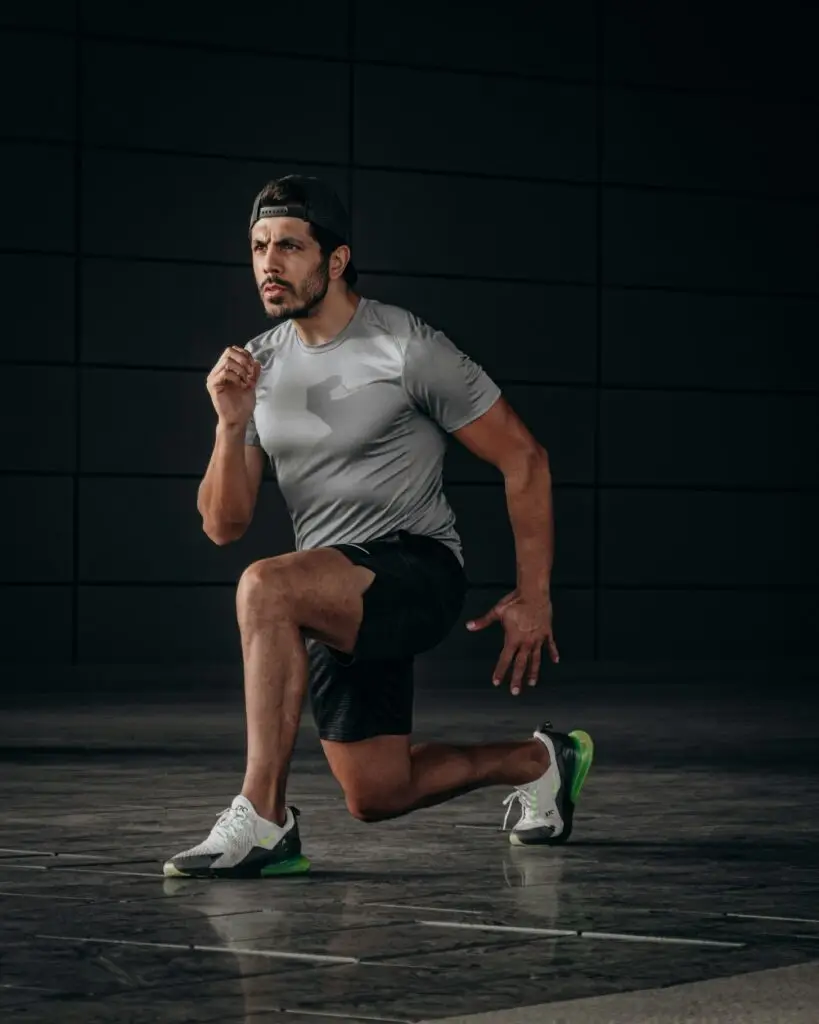Hello, I’m Will Duru, an award-winning personal trainer and the founder of the 12Reps app. I’ve seen countless individuals transform their bodies and lives. Many of my clients, especially busy professionals in the City of London, often ask me about effective ways to train when time, space, or equipment is limited. My answer? Resistance bands. You might be skeptical, thinking these colourful elastic loops are just for rehabilitation or light warm-ups. But what if I told you they could be your secret weapon for serious strength gains and muscle building, no matter where you are?

For years, the fitness industry has championed heavy weights and bulky gym equipment as the only path to true strength and muscle. This perception has led many to believe that without access to a fully equipped gym, significant progress is impossible.
I’m here to tell you that’s a misconception I’ve actively worked to debunk throughout my career. I’ve witnessed firsthand how individuals, from beginners to seasoned athletes, have achieved remarkable results using just resistance bands.
For instance, I recently worked with Sarah and Peter, a couple both aged 70, who had never trained before. We started their fitness journey exclusively with resistance bands to help them understand the basics of movement and build foundational strength. Within just 12 weeks, they gained noticeable lean muscle, proving that bands are an incredibly effective starting point before even touching weights.
They offer effectiveness, making them an ideal solution for anyone seeking to build strength, enhance fitness, and transform their physique, whether at home, on the go, or even in a small office space.
In this guide, I’ll draw upon my background in Sport & Exercise Science and extensive practical experience to reveal the true potential of resistance bands. We’ll delve into the science that makes them so effective, explore their numerous advantages, and equip you with the knowledge and practical strategies to integrate them into your training for optimal results. Prepare to challenge your preconceptions and discover a powerful, accessible path to building real strength
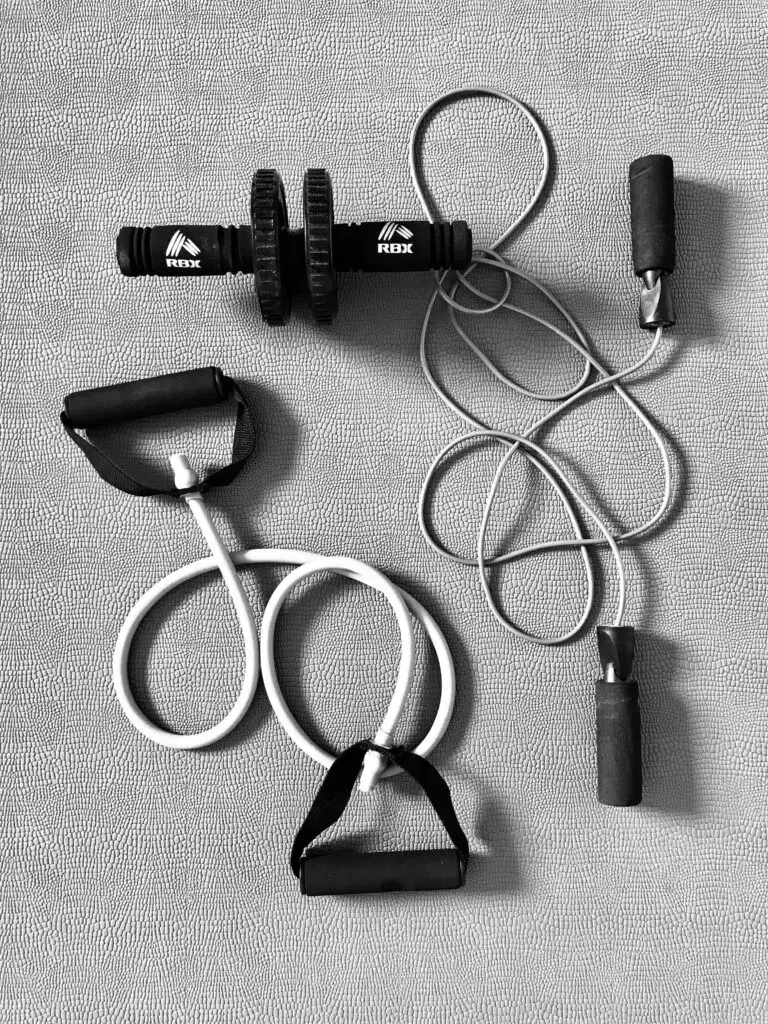
The Science Behind Resistance Band Training: Unlocking Elastic Power
During my decade as a personal trainer, I’ve seen numerous fitness trends come and go. But resistance bands aren’t a fad; they’re a legitimate, highly effective tool that offers a unique set of advantages, making them far more than just a backup plan for when you can’t get to the gym. These benefits are why I frequently incorporate them into my clients’ programs, regardless of their fitness level or goals.
Portability and Convenience
One of the most obvious, yet profoundly impactful, benefits of resistance bands is their unparalleled portability. In today’s fast-paced world, finding time for fitness can be a challenge, let alone finding a gym. Bands weigh next to nothing, take up minimal space, and can be easily packed into a suitcase, backpack, or even a desk drawer. This means your workout routine doesn’t have to be disrupted by travel, limited space at home, or a tight schedule. I’ve had clients maintain incredible consistency and progress while on business trips, simply because they had a set of bands with them. This convenience removes a significant barrier to consistent training, making fitness truly accessible anywhere, at any time.
Joint-Friendly Training
For many, especially those with previous injuries or joint discomfort, traditional weightlifting can be intimidating or even painful. Resistance bands offer a remarkably joint-friendly alternative. The elastic nature of the bands provides a smooth, continuous resistance that reduces the impact and stress on joints compared to the fixed, often jarring, movements of free weights. This makes them ideal for rehabilitation, pre-habilitation, and for individuals looking to build strength without exacerbating joint issues. I’ve personally used bands to help clients safely strengthen muscles around vulnerable joints, allowing them to regain confidence and continue their fitness journey pain-free.
Cost-Effective Strength Building
Let’s be honest: gym memberships and home gym equipment can be expensive. Resistance bands, however, are incredibly cost-effective. For a fraction of the price of a single dumbbell, you can acquire a versatile set of bands offering a wide range of resistance levels. This affordability democratizes strength training, making it accessible to a much broader audience. It’s a testament to their value that such an inexpensive tool can deliver such significant results. I often recommend bands as a starting point for beginners, allowing them to build a solid foundation of strength before investing in more costly equipment, if they even feel the need to.
Versatility for All Fitness Levels
From beginners taking their first steps into strength training to advanced athletes looking to add accommodating resistance to their lifts, resistance bands are incredibly versatile. They can be used for warm-ups, activation exercises, full-body strength training, mobility work, and even assisted exercises (like pull-ups). The ability to easily adjust resistance by simply choosing a different band or altering your body position makes them suitable for progressive overload, a fundamental principle of muscle growth. I’ve seen clients use the same set of bands for years, continually finding new ways to challenge themselves as they get stronger. I’ve also personally used resistance bands and handles to train clients preparing for demanding events like the London, New York, and Chicago Marathons. The bands allowed us to build crucial strength and endurance in a joint-friendly way, complementing their running training without adding excessive impact.
Types of Resistance Bands and Their Applications: Choosing Your Tools
Just like dumbbells come in various weights, resistance bands come in different forms, each with its unique characteristics and ideal applications. Understanding these differences is key to maximising your training and selecting the right tools for your fitness goals. In my practice, I utilise all these types, often combining them to create comprehensive and effective training programs for my clients.
Loop Bands: Activation and Isolation
Loop bands, often referred to as mini bands or power bands, are continuous loops of elastic material. They vary in thickness and width, which dictates their resistance level. Mini bands are typically smaller and lighter, making them excellent for:
- Glute Activation: Placing a mini band around your knees for exercises like glute bridges, clam shells, or monster walks effectively targets and activates the glute muscles, which are often underactive due to prolonged sitting.
- Isolation exercises can add resistance to smaller muscle groups, such as lateral raises for the shoulders or bicep curls, providing a focused challenge.
- Warm-ups: Mini bands are fantastic for dynamic warm-ups, preparing your muscles and joints for more intense work.
Larger loop bands, also known as power bands or pull-up assist bands, offer much higher resistance and are incredibly versatile for full-body exercises. These are the bands you’ll often see used for:
- Assisted Pull-ups: Looping a band around a pull-up bar and your knee or foot can significantly reduce the bodyweight load, allowing you to perform more repetitions and build strength towards unassisted pull-ups.
- Compound Movements: Adding accommodating resistance to squats, deadlifts, and bench presses, where the resistance increases as you approach the top of the movement.
- Resistance for Bodyweight Exercises: Making push-ups, dips, or rows more challenging.
When selecting loop bands, consider a set with varying resistance levels to allow for progression. Quality indicators include durable latex or fabric construction and consistent resistance throughout the stretch. Always inspect bands for tears or wear before use.
Flat Bands: Rehabilitation and Mobility
Flat bands are thin, wide sheets of elastic material, often sold in rolls or pre-cut lengths. They typically offer lighter resistance levels compared to loop or tube bands, making them ideal for more controlled movements, rehabilitation, and mobility work. Their primary uses include:
- Physical Therapy and Rehabilitation: Their gentle, progressive resistance is perfect for rebuilding strength and range of motion after an injury. I’ve used them extensively with clients recovering from various musculoskeletal issues.
- Mobility and Stretching: Flat bands can assist in deepening stretches or adding gentle resistance to mobility drills, helping to improve flexibility and joint health.
- Warm-ups and cool-downs are excellent for preparing muscles for activity or aiding in recovery after a workout.
- Travel and Space Efficiency: Even more compact than mini bands, flat bands are straightforward to pack, making them a favourite for on-the-go fitness.
For each type of band, remember that proper form is paramount. The resistance curve of bands means that the end range of motion is often the most challenging. Focus on controlled movements that engage the target muscles throughout the entire exercise. I always emphasise quality over quantity, ensuring my clients master the movement before increasing resistance. By understanding the nuances of each band type, you can effectively develop a comprehensive and progressive strength training program tailored to your lifestyle.
Essential Resistance Band Exercises: Your Go-To Moves
Now that you understand the science and benefits of resistance bands, let’s get to the practical part: the exercises. As a personal trainer, I believe in smart, practical training. These exercises are ones I regularly use with my clients because they target major muscle groups and offer excellent results. Remember, focus on good form first, then add more resistance.
Upper Body: Building Pressing and Pulling Strength
Your upper body requires both pushing and pulling movements to achieve balanced strength. Resistance bands are excellent for both.
- Band Chest Press: This is a fantastic alternative to a dumbbell or barbell press. Anchor a large loop band or tube band behind you (e.g., around a sturdy pole or door anchor). Hold the ends of the band in each hand, palms facing down, and press forward from your chest. Keep your core tight and control the movement both ways. This works your chest, shoulders, and triceps.
- Band Rows: For your back, rows are key. Stand on a loop band or anchor a tube band in front of you. Pull the band towards your body, squeezing your shoulder blades together. Imagine pulling with your elbows. This strengthens your back muscles and biceps.
- Band Shoulder Press: Stand on a loop band or anchor a tube band under your feet. Hold the band at shoulder height and press it overhead. Keep your shoulders down and away from your ears. This builds strong shoulders.
- Band Bicep Curls & Tricep Extensions: For arm definition, these are simple yet effective. For curls, stand on the band and curl it up towards your shoulders. For extensions, anchor the band overhead or behind you and press down or extend your arms back. Focus on feeling the muscle work.
Form Cues: Always keep your movements controlled. Don’t let the band snap back. Engage your core to protect your back. If the band feels too loose, use a stronger band or shorten it by gripping it closer to the anchor point. If it’s too hard, use a lighter band or lengthen it.
Lower Body: Developing Power and Stability
Your legs are your foundation. Resistance bands can build powerful and stable lower body muscles.
- Band Squats: Stand on a loop band, holding the top of the loop over your shoulders or holding a tube band with handles. Perform a squat, keeping your chest up and pushing your hips back as if sitting in a chair. The band adds resistance as you stand up, making the top part of the squat extra challenging. This works your quads, hamstrings, and glutes.
- Band Deadlifts: Stand on a loop band, holding the top of the loop or handles. Hinge at your hips, keeping your back straight, and lower the band towards the floor. Then stand up by squeezing your glutes. This is great for your hamstrings, glutes, and lower back.
- Band Lunges: Step one foot forward and place a loop band under your front foot, holding the ends. Or, put a mini band around your thighs. Perform a lunge, keeping your front knee over your ankle. This improves leg strength and balance.
- Glute Activation (Mini Band): Place a mini band around your ankles or just above your knees. Perform exercises such as glute bridges, clamshells, or lateral walks. These are fantastic for waking up and strengthening your glute muscles, which are crucial for overall lower body health and power.
Progression: To make these harder, use a band with more resistance, do more repetitions, or slow down the movement to increase time under tension. For single-leg exercises, the challenge increases significantly.
Full Body: Compound Movements with Bands
Compound movements engage multiple muscle groups simultaneously, making your workouts more effective. Bands can be integrated into these movements for added challenge.
- Band Thrusters: Combine a squat with an overhead press. Stand on a loop band, hold it at shoulder height, and squat down. As you stand up, press the band overhead. This is a full-body powerhouse.
- Band Mountain Climbers/Plank Jacks: Place a mini band around your ankles or feet. Get into a plank position and perform mountain climbers or plank jacks. The band adds resistance to your core and leg movements, making these cardio and core exercises more intense.
Safety First: Always check your bands for any signs of wear or tears before use. Ensure your anchor points are secure. If you’re new to an exercise, practice the movement without the band first to get the form right. It’s always better to start with lighter resistance and gradually increase it. Your body will thank you for it.
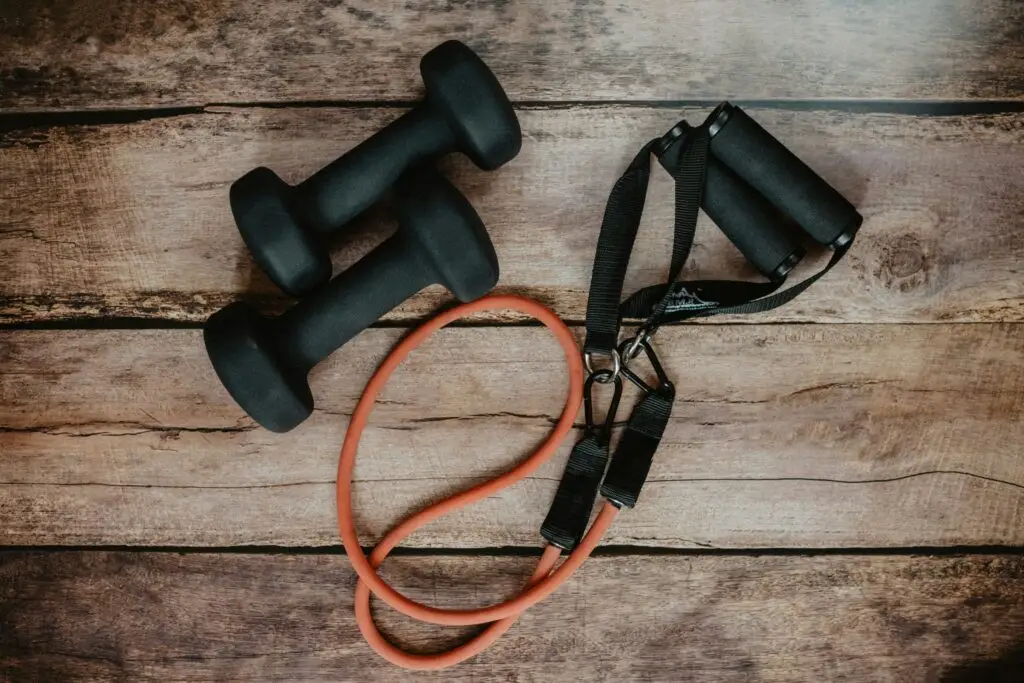
Programming Resistance Band Strength Training: Your Roadmap to Results
Having a set of resistance bands and knowing a few exercises is a great start. But to truly build strength and see lasting changes, you need a plan. As a personal trainer, I design programmes that are structured and progressive. Here’s how you can program your resistance band training for the best results.
Sets, Reps, and Resistance Progression
Just like with weights, the number of sets and repetitions (reps) you do depends on your goal:
- Strength: Aim for lower reps (e.g., 5-8 reps) with a band that makes the last few reps very challenging. You might do 3-5 sets.
- Muscle Growth (Hypertrophy): Focus on moderate reps (e.g., 8-15 reps) with a band that brings you close to muscle failure. Do 3-4 sets.
- Endurance: Go for higher reps (e.g., 15-20+ reps) with a lighter band, focusing on continuous movement. You can do 2-3 sets.
Progressive Overload: This is the most important rule for building muscle. You must continually challenge your muscles over time. With bands, you can do this by:
- Increasing Resistance: Use a thicker band or combine bands.
- Increasing Reps/Sets: Perform more repetitions or add a set.
- Increasing Time Under Tension: Slow down your movements, especially the lowering (eccentric) phase.
- Decreasing Rest Time: Shorten the breaks between your sets.
- Improving Form: Better form means the target muscle works harder.
Weekly Programming Structure
How often should you train with bands? It depends on your fitness level and goals. For most people, two to four resistance band workouts per week are ideal.
- Full-Body Workouts: If you’re training two to three times a week, full-body workouts are highly effective. This means you work all major muscle groups in each session. This allows for good recovery between sessions.
- Split Routines: If you’re training four or more times a week, you might consider a split routine (e.g., upper body one day, lower body the next). This allows you to give more attention to specific muscle groups.
Recovery: Remember, muscles grow when they recover. Ensure you get enough sleep and proper nutrition. Don’t train the same muscle group intensely two days in a row. Listen to your body.
8-week resistance band training program
Equipment:
- Handles (tube bands with grips)
- Loop bands (long loops)
- Mini bands (short hip/glute bands
- Frequency: 3x per week (e.g. Mon, Wed, Fri)
- Sets: 4 sets per exercise 10- 12 reps
- Rest: 30–60 secs between sets
Week 1–2: Focus on form
Week 3–4: Add reps or tighter bands
Week 5–6: Slow down tempo
Week 7–8: Reduce rest, increase tension or volume Focus: Full body each session, balanced push/pull/lower/cor
Weeks 1–4 (Base Phase – Control & Form)
Workout A
Chest Press (Handles, standing or anchor to door)
Bent-over Row (Loop band under feet)
Banded Squat (Mini band above knees)
Glute Kickbacks (Loop band, on all fours)
Dead Bug (Mini band around feet)
Banded Jumping Jacks (Mini band around ankles)
Workout B
Shoulder Press (Handles)
Seated Row (Loop band around feet)
Reverse Lunge (Mini band above knees)
Hip Thrust (Loop band across hips)
Plank with Band Pull-Aparts (Mini band around wrists)
Band Sprints (Loop band around waist, stationary run)
Workout C
Push-Up to Row (Mini band around wrists + Handles under palms)
Lateral Raise (Handles or Loop band under feet)
Banded Deadlift (Loop band under feet)
Side Step Squat (Mini band above knees)
Leg Raises with Mini Band
High Knees (Mini band around ankles)
Weeks 5–8 (Strength Phase – Tempo & Volume)
Workout A
Slow Tempo Chest Press (Handles, 3s down)
Loop Band Bent Row with Hold (2s pause at top)
Banded Bulgarian Split Squat (Loop band under front foot)
Glute Bridge Hold + Pulses (Mini band)
Russian Twists with Mini Band
Banded Burpees (Mini band above knees)
Workout B
Arnold Press (Handles)
Single-arm Row (Loop band, anchor to door or foot)
Lateral Banded Walks (Mini band at ankles)
Step-ups with Loop Band Resistance
Hollow Hold with Band Pull (Mini band)
Jump Squats with Mini Band
Workout C
Close-grip Press (Handles)
Rear Delt Pull-Apart (Mini band)
RDL with Loop Band (under feet, around hips)
Frog Pumps (Mini band above knees)
Bicycle Crunch with Mini Band
Finisher: 30s each – Mountain Climbers, Band Slams (anchored), Plank Jacks
Optional Progression
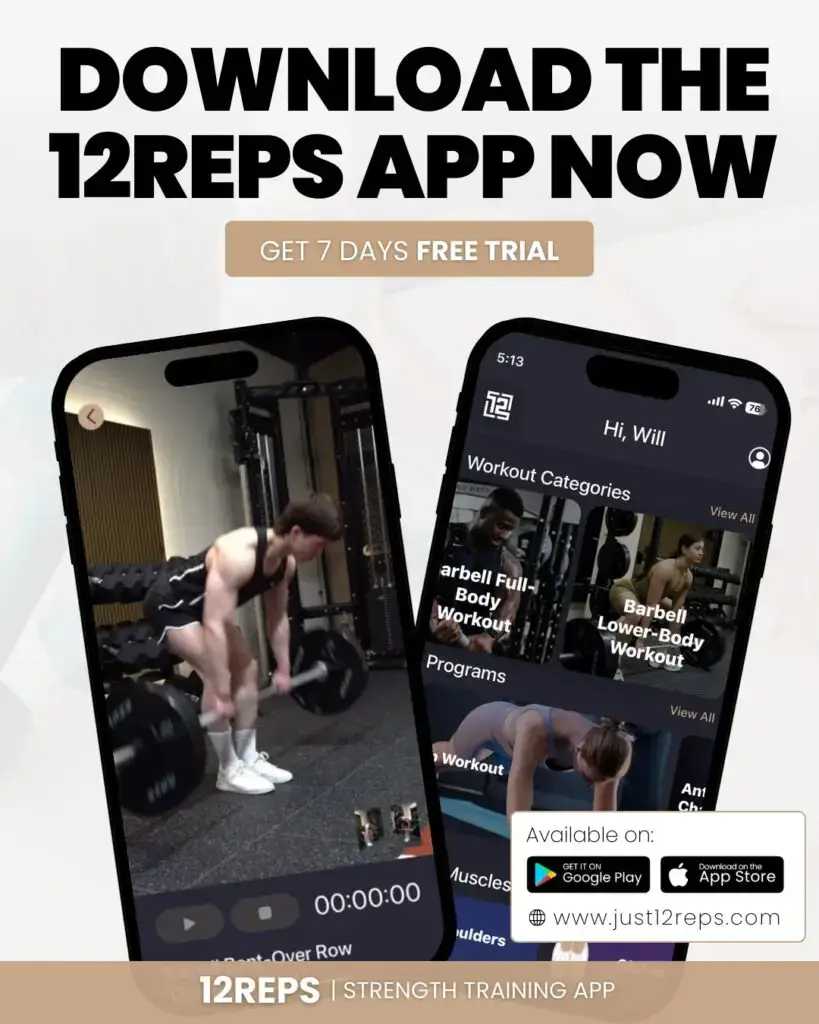
Conclusion & Motivation: Your Strength, Unbound
This guide has opened your eyes to the incredible potential of resistance bands. As a personal trainer with a Sport & Exercise Science Hons degree, I can confidently tell you that these versatile, portable, and cost-effective tools are far more than just a gym alternative. They are a powerful means to build real strength, significant muscle, and lasting fitness, no matter your starting point or where you choose to train.
We’ve explored the science behind their effectiveness, from variable resistance to joint-friendly mechanics. We’ve covered the practical advantages, the different types of bands, and a comprehensive range of exercises. Most importantly, I’ve shared how to program your training effectively and avoid common mistakes, drawing on my decade of experience helping clients achieve their fitness goals.
Serious strength gains are possible with resistance bands. It’s about understanding how to use them correctly, being consistent, and applying the principles of progressive overload. Don’t let limited equipment or space be an excuse any longer. Your strength journey doesn’t need to be confined to a gym. It can start right now, wherever you are, with just a few simple bands.
Take the first step. Grab a band, try an exercise, and feel the difference. With the proper knowledge and dedication, your strength is truly unbound. And remember, the 12Reps app is always there to guide you, track your progress, and help you unlock your full potential.

